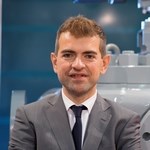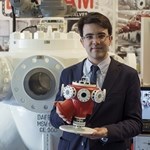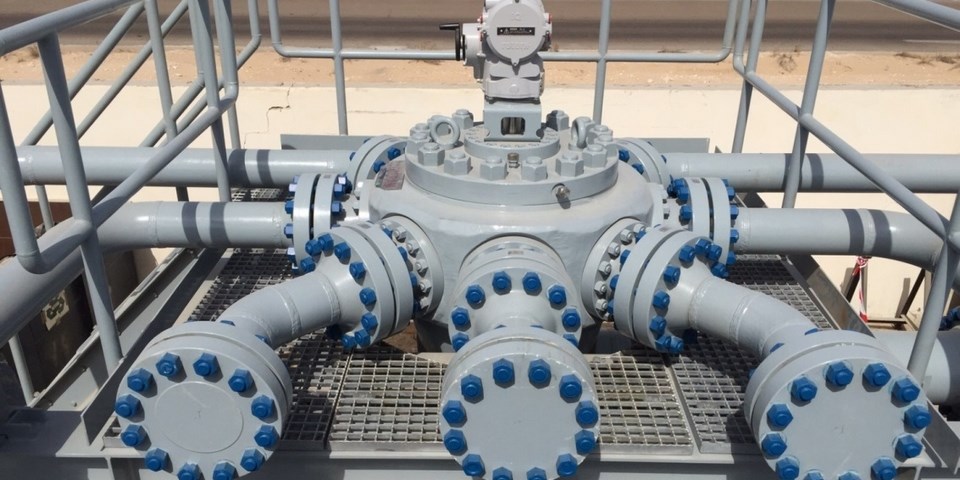Article by Gustavo Rentel, Marco Sparisci, Enrico Palmieri (DAFRAM SpA, Italy)
___
Background and Challenges
Lower costs, safety, environmental friendship and efficiency are now very significant keywords in the oil and gas industry. In order to achieve cost reduction it is necessary to optimise materials and equipment (in terms of installation, commissioning, performance, operation and maintenance), reduce weight and energy consumption, combine and integrate functions and optimise control loops. One example of remarkable optimisation in oil and gas engineering is represented by the application of the MSVs in production facilities, both onshore and offshore.
Offshore application for MSV
In order to meet all the space and weight needs for offshore applications, a compact manifold for the topside of a fixed platform is possible by means of a Multiport Selector Valve (MSV). Fixed offshore oil and gas production structures are platforms built on legs, anchored directly onto the seabed, and they include production and test manifolds, separators, injection manifolds, tanks and utility systems. During the production process, it is necessary to measure and monitor the flow rate of the several fluids coming from the wells. For this reason, a multiphase flow meter is used and it is shared between several wells.
A conventional manifold is an assembly of pipes and valves with two outlet pipes, and it can be used to collect produced fluids and direct selected wells to a test line. For example, a manifold for seven wells can have fourteen valves and actuators, hence it is quite a complex system with conduits, boxes, wires, fittings, structural frames, etc. An alternative to the use of individual valves on each branch line is the use of a Multiport Selector Valve (MSV). It consists of one steel body with five or more inletports and two outlet-ports. An obturator (selector) allows for isolation of one chosen inlet from the others, so that the oil or gas coming from the selected well is directed to the test line, while the rest of the wells is collected and carried to the production line.
Thanks to this valve concept it is possible to achieve a very compact layout for the production manifold, since the on-off actuated valves are replaced by a single MSV and a lot of connection fittings, pipes and elbows are avoided.
MSV special design and testing
The basic MSV design is derived from the top-entry valve construction. Preliminary engineering is therefore performed according to the most common International Standards (e.g. ASME B16.34, ASME BPVC Sec. VIII, ASME B31.4, etc.). The shell and trim design is enhanced by FEM analysis in order to verify and optimise the most important parts and check the sealing capability. Special static and dynamic seal design allows for ultra low fugitive emission capabilities both from body joints and stem. In some cases, a special internal jacket and a special selector can be provided to quickly replace worn parts without stopping well production.
A perfect tightness of the seat is fundamental to ensure a reliable and accurate measurement of multiphase flows. Proper design ensures that the stream flowing to the test line is prevented from blending with the one flowing to the production line. Through specific attention to seat design and accurate machining, DAFRAM MSVs have been able to reach the smallest leakage rates. For example, an ISO 5208 Rate A leakage rate can be provided on both soft and metal-seated valves.
MSV bodies can be supplied from a wide range of raw materials (bars, castings or forgings) and this enables buyers to find the most competitive and optimised solution on a case by case basis. As a matter of fact DAFRAM employs a patented casting process called Replicast, which considerably reduces wasted material, machining time and overall weight.
The available materials are the most commonly used in oil and gas applications to fit the process conditions, such as carbon steel, stainless steel and exotic alloys. If needed, a weld overlay of noble material can be used to safeguard the sealing areas or to protect the entire wetted areas from corrosion. Furthermore, advanced manufacturing technologies are crucial in order to provide long lasting effectiveness of valve functionality and sealing capability. An intelligent actuator is the muscle of a MSV. Selection, installation, configuration and functional test are mandatory activities to guarantee an effective valve operation. Increased actuator precision leads to further material saving, and a proprietary feedback on the positioning system ensures that the selector has reached the correct position.
Thus, customized testing procedures are necessary to validate functionality of valve-actuator assembly and collect data on operational response.
MSV technology has already been accepted and is commonly used worldwide by the main End Users such as Saudi Aramco, Petrobras, PDVS, Petronas, PDO and ADCO. Users have experienced a reduced number of leak paths as well as reduced costs for commissioning, operation and maintenance (CAPEX and OPEX) when compared to conventional manifolds.
For example, taking into account a NPS 4” (test line) x 10” (production line) Class 600 conventional manifold with 7 wells, a MSV can replace 14 actuated on/off valves, allowing to reach a footprint reduction of 45% and a weight decrease of 27%. Furthermore CAPEX and OPEX are significantly reduced and, in the long term, a cost saving of 50% can be estimated.
DAFRAM currently supplies MSVs for several projects, also with restrictive requirements such as Rate A Class 2500 Metal to Metal seat, FE test according to Shell Fugitive Emission Tightness Class A, Type Acceptance Test (TAT) based on SHELL MESC SPE 77/300 and ISO 5208 (at ambient, low and high temperature), fire safe, sour service, tri-phase fluids (with abrasive particles).
The use of MSVs allows a considerable reduction of the overall weight and footprint of a test manifold. Furthermore, replacing several systems with a single point operation leads to lowered commissioning, operation and maintenance costs. Nevertheless, in order to make reliable measures of wells fluids, it is essential that the valve is capable of ensuring a perfect tightness together with long-lasting reliable solutions at operating conditions. To achieve good outcomes, suppliers need to adequately manage the entire manufacturing life cycle, including a deep knowledge of R&D, design, validation and testing.
About the authors
 Gustavo Rentel
Gustavo Rentel works as Project Engineer at DAFRAM SpA and has more than 30 year experience in oil and gas industry. He is graduated in Electrical Engineering and has a Master’s Degree in Electronics.

Marco Sparisci is Technical Product Manager at DAFRAM SpA and he is responsible for development and design of subsea and severe service valves. He has been involved in structural and thermal design by FEM and special coatings characterization for high temperature valves. Today he serves also in the role of R&D coordinator for new products design validation and testing.

Enrico Palmieri holds a Master’s Degree in Mechanical Engineering and he was involved as R&D Engineer in activities on on/off and control ball valves, Multiport Selector Valves, surface coatings characterization and investment casting techniques. Today he works as Technical Project Manager at DAFRAM SpA.









